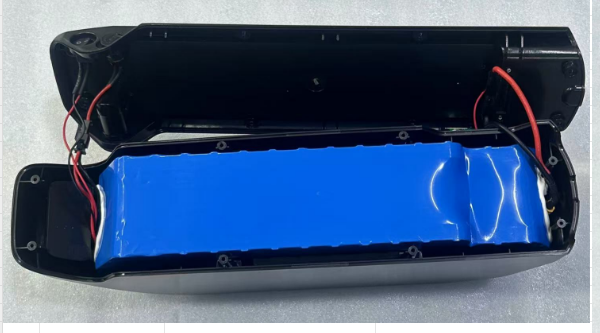Introduction:
As a battery manufacturer, specializing in lithium batteries for LEV, from e-bikes, e-scooters, e-motorcycles to golf carts, we know that the heart of the vehicle is its battery. It’s frustrating when you turn the key or press the power button and… nothing happens. Before you assume the worst and look for a costly replacement, there are several things you can check yourself.
Most battery problems are simpler than you think. This guide will walk you through a step-by-step process to diagnose what’s wrong and, in many cases, how to fix it. Remember: Safety First! Always prioritize your safety when working with electrical components.
Step 1: The Initial Safety Check & Visual Inspection
Before you grab any tools, do these basic checks.
- Safety First: Wear safety glasses and gloves. Ensure the area is dry and well-ventilated.
- Check the Basics: Is the vehicle turned on? Is the emergency kill switch (on some scooters/motorcycles) in the “on” position? It sounds silly, but it happens!
- Key Ignition: Try turning the key a few times. Sometimes the ignition switch can be finicky.
- Visual Inspection:
- Connectors: Look at the battery terminals and the connectors that plug into the bike/cart. Are they corroded (white or bluish powder)? Are they loose? A loose connection is one of the most common causes of “no power” issues.
- Cables: Check the wires running from the battery to the motor controller. Are any frayed, cut, or burnt?
- Battery Case: Is the battery casing cracked, swollen, or leaking? If the battery is swollen or leaking, STOP IMMEDIATELY. Do not touch it, charge it, or try to fix it. This is a serious hazard and the battery needs to be safely disposed of and replaced.
Step 2: Measure the Voltage (The Most Important Test)
You will need a cheap and handy tool called a multimeter. This is the best investment for any electric vehicle owner.
- Set your multimeter to DC Voltage (V-). Set it to a range higher than your battery’s rated voltage (e.g., 200V for a 48V battery).
- Locate the battery’s main positive (+) and negative (-) terminals.
- Touch the red multimeter probe to the positive terminal and the black probe to the negative terminal.
- Read the voltage.
What does the reading mean?
- Voltage is Normal or Slightly Low (e.g., ~50V for a 48V ncm battery): If the voltage reading is close to the rated voltage, your battery likely has charge. The problem is probably elsewhere (see Step 4).
- Voltage is Very Low (e.g., 30V for a 48V ncm battery): The battery is severely depleted. This could be due to a long period without use, a faulty charger, or an internal cell imbalance. This is a common state for a battery that seems “dead.”
- Voltage is Zero: This could indicate a completely dead battery, but more often, it means a blown fuse or a broken connection inside the battery pack or on its circuit.
Step 3: Checking and Charging the Battery
- Check the Fuse: Many battery packs have an inline fuse or a fuse on the circuit board. Locate it (you might need to open the battery case—if you’re uncomfortable, stop here and consult a professional). Use your multimeter on the continuity setting (it beeps) to test the fuse. If it doesn’t beep, the fuse is blown. Replacing a fuse is an easy and cheap fix!
- Try Charging: Plug in your charger to a wall outlet and connect it to the battery.
- Charger Light is Green (or shows “Full”) immediately: This often indicates the charger recognizes the battery voltage is too low to charge (a safety feature). This is a typical symptom of a deeply discharged battery. We’ll write a detailed guild in the next post.
- Charger Light is Red (Charging): Leave it to charge for a few hours. Check if the voltage is rising with your multimeter. If it is, you may have just drained it completely.
- Charger Light Doesn’t Turn On: The problem could be with your charger, not your battery! Test the charger’s output voltage with your multimeter. If it reads zero, you need a new charger.
Step 4: Ruling Out Other Components
If your battery voltage is good but the vehicle still doesn’t work, the battery might be fine! The issue could be elsewhere.
- The Controller: The motor controller is the brain of your vehicle. If it fails, it won’t send power to the motor, even with a full battery.
- The Throttle or Ignition Switch: A faulty throttle or ignition switch won’t send the “on” signal to the controller.
- The Motor: While less common, motor failure can also occur.
- Wiring Loom: A broken wire somewhere in the system can break the circuit.
How to test: This requires more advanced skill. You can try to visually inspect connectors to the controller and motor for burn marks or looseness. For a precise diagnosis of these components, it’s best to take your vehicle to a qualified technician.
Step 5: Understanding the Problem & Solutions
Based on your diagnosis, here are your solutions:
| Problem | Likely Cause | Solution |
|---|---|---|
| Loose/Corroded Connectors | Poor electrical contact | Clean terminals with a wire brush and a mix of baking soda & water. Ensure all connections are tight. |
| Blown Fuse | A power surge or short circuit | Replace the fuse with an identical type and rating. |
| Deeply Discharged Battery | Left unused for months, faulty BMS, or bad charger. | Try a “wake-up”: charge it with a compatible charger for 1-2 hours, even if the light is green. Sometimes this can trickle enough charge in for the BMS to restart. If not, then check our another post: How to Revive a Severely Over-Discharged Lithium Battery Pack |
| Bad Charger | Faulty electronics in the charger | Test the charger’s output voltage. If it’s not correct, replace the charger. |
| Swollen/Leaking Battery | Internal damage, overcharging, physical abuse | DO NOT USE. Replace the battery immediately. This is a fire risk. |
| Good Voltage but No Power | Faulty controller, throttle, or wiring | Requires professional diagnosis and repair. |
Conclusion: When to Call a Professional
You’ve done the groundwork! If you’ve found a simple fix like a loose wire or a blown fuse, congratulations! If your battery is swollen, won’t hold a charge after attempting a recharge, or if the voltage readings are erratic, it’s time to seek help.
Internal issues like a failed cell or a malfunctioning Battery Management System (BMS) are not user-serviceable. Opening a lithium-ion battery pack is extremely dangerous and should only be done by trained experts. but if you’re interested, go to have a look at our another post: How to Revive a Severely Over-Discharged Lithium Battery Pack
As your trusted battery partner, we recommend always sourcing high-quality, certified replacement batteries and components from orginal manufacturer or reputable dealers to ensure your safety and the longevity of your electric vehicle.
Stay charged and ride safe!





中.jpeg)
